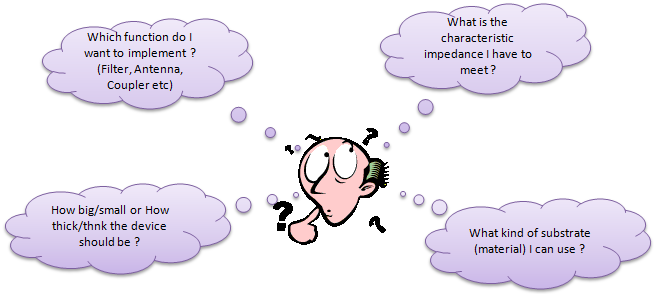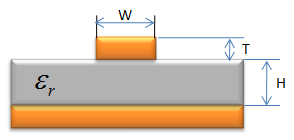|
RF |
||
|
Microstrip/Stripline
Microstrip is a electronic structure in which a transmission line(conductive trace line) sitting on top of a dielectric material which is in between the transmission line and ground plane as illustrated below.
In this aspect, almost any trace line you see in most electric circuit board can be called a Microstrip. But we don't call any trace line on the circuit board as a microstrip. Normally when we call it as microstrip, normally those structure is intentionally designed to perform a special functions like filters or antenna etc. Some of the examples of Microstrip are shown below.
Very similar to microstrip, there is another structure called Stripline. The key difference between Microstrip and strip line is the location of transmission line. In microstrip, the transmission line is sitting on top of dielectric material whereas in stripline the transmission line is embedded in the dielectric material and ground planes are on both sides of the transmission line as shown below.
As the operation speed (e.g, clock speed) of an electric system or frequency of wireless communication system goes higher the importance of microstrip and stripline gets higher, When we try designing microstrip or stripline, you need to have clear answers to some of basic questions as illustrated below.
Once you determined answers to the questions regarding the design goal, you have to determine the basic electrical properties of the microstrip and stripline. Most important electric properties of the structure would be Characteristic impedence and capacitance. These electrical properties are determined mainly by the dimmension of the microstrip/stripline and the dielectric material as examplified below. The equation shown here may be a little different from what you see from other source. Just try to understand a general tendancy from these equation. In practice these days nobody is designing microstrip/stripline using these simple equation. In most case they use very expensive softwares (HFSS, Microwave Studio, Maxwell etc) to calculate these electric properties by directly solving maxwell equations.
Some of the general tendancy you can directly read from these equation shown above are
|
||






